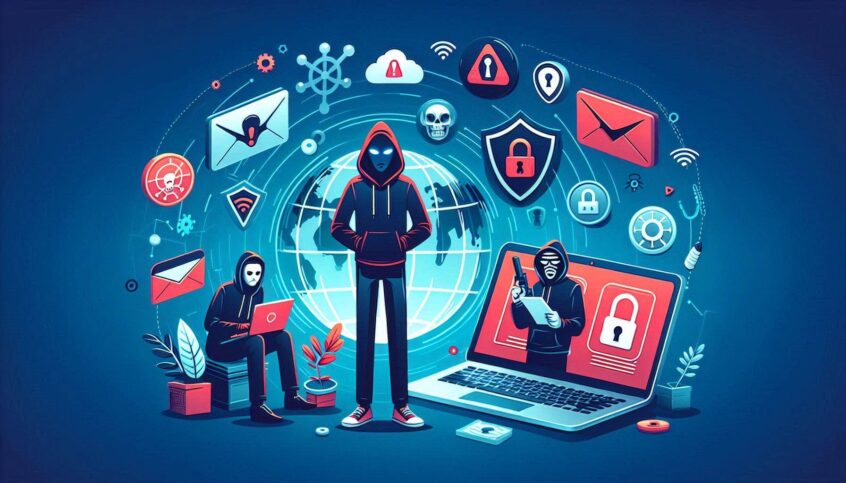Cybersecurity threats continue to evolve, and businesses must stay vigilant to protect their digital assets. While we have outlined major threats identified by experts, the single greatest threat to your security remains your employees.
While almost always unintentional, employees continue to expose businesses to threats by falling for phishing/smishing campaigns, downloading compromised attachments, entering usernames and passwords into fake websites, and logging into company systems from unsecured networks. Employees are also guilty of using easy to hack passwords, visiting free game and movie websites that are nothing more than a front for malware, downloading “free software” such as calendar applications that provide yet another opportunity for cybercriminals to access your network. I could go on, but I think I have made my point. If you get nothing else from this article, please, please, please invest in cybersecurity training!
Now, here are the top cybersecurity threats businesses are facing in 2025 (beyond their employees):
1. AI-Powered Cyberattacks
- Cybercriminals are using artificial intelligence (AI) to automate attacks, create realistic deepfake scams, and develop more sophisticated phishing emails that evade traditional security measures.
2. Ransomware-as-a-Service (RaaS)
- The ransomware industry has become more accessible to cybercriminals through RaaS platforms, making it easier for attackers to target businesses of all sizes.
3. Supply Chain Attacks
- Attackers compromise third-party vendors, software providers, or cloud services to gain access to multiple organizations through a single breach.
4. Cloud Security Vulnerabilities
- As businesses migrate to the cloud, misconfigured settings, poor identity management, and API security flaws expose sensitive data to breaches.
5. Quantum Computing Threats
- While still in early stages, quantum computing poses a risk to traditional encryption methods, making current security protocols potentially obsolete in the near future.
6. Zero-Day Exploits
- Hackers are exploiting software vulnerabilities before vendors release patches, making it crucial for businesses to adopt proactive threat intelligence.
7. Insider Threats (Malicious & Accidental)
- Employees, whether through negligence or intentional harm, remain one of the biggest security risks, requiring robust access controls and monitoring.
8. Credential Theft & MFA Fatigue Attacks
- Cybercriminals bypass multi-factor authentication (MFA) using phishing attacks, push notification spamming, or SIM-swapping to gain access to business systems.
9. IoT and Edge Computing Vulnerabilities
- As businesses deploy more IoT devices and edge computing solutions, unpatched firmware, weak credentials, and lack of visibility increase security risks.
10. Regulatory Compliance & Data Privacy Challenges
- With evolving global regulations (such as GDPR updates and stricter U.S. data privacy laws), businesses must ensure compliance or face heavy fines and legal issues.
Mitigation Strategies for Businesses
✅ Implement zero-trust architecture
✅ Use AI-driven threat detection
✅ Regularly update and patch systems
✅ Educate employees on phishing & social engineering
✅ Enforce strong identity & access management (IAM)
✅ Backup critical data to prevent ransomware impact
✅ Secure third-party integrations & supply chains
Want to explore how much comprehensive cybersecurity costs? Contact Structured Technology Solutions today at [email protected].

